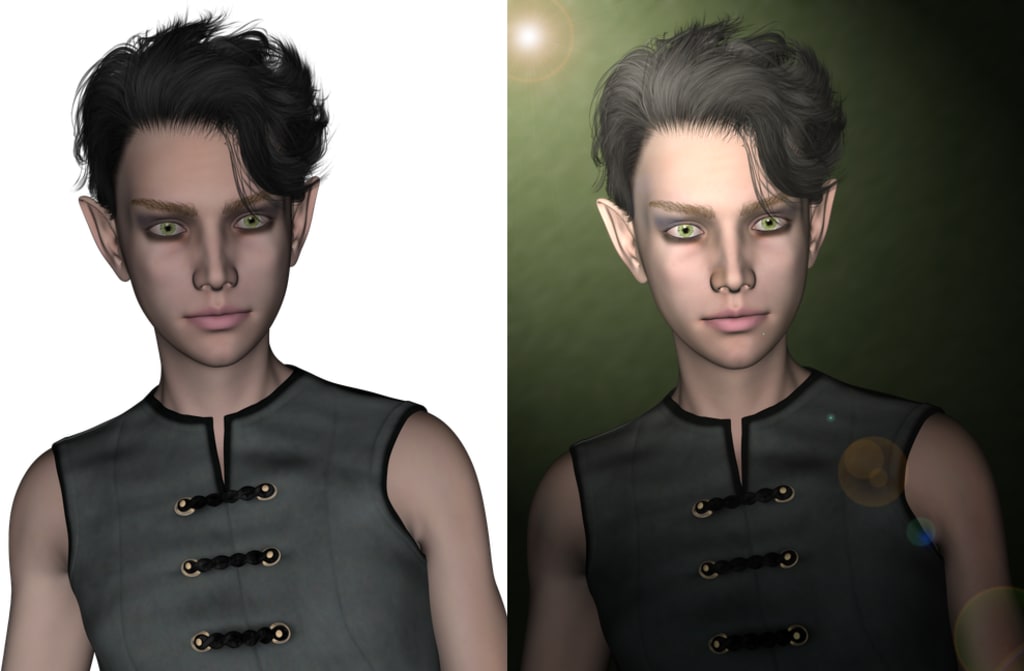Creating Fantasy Portraits in CS6
An Artist's perspective

I’m a fantasy artist. I enjoy working with both traditional medium-graphite and pencils- and digital art. When I’m doing digital art I mainly use Adobe’s Creative Suite Six’s version of Photoshop, and DAZ studio. I prefer DAZ studio because the market place on their website automatically adds the products to your library.
So, once you buy it you can just download it by double clicking inside DAZ studio. Instead of having to worry about sub folders and getting textures and everything placed correctly by yourself.
As for the version of Photoshop I use, you can’t buy it anymore. I bought my copy by itself and decided to keep it instead of upgrading to the new monthly Photoshop plan. Though, since it’s just a prior version of the app the process is nearly identical in the new version of Photoshop as well.
For my budget, it was a smarter decision to use what I already had. Instead of paying monthly for a software suite I may not use that often outside of editing like this. Since most of my art right now is traditional with graphite and pencils.
The first step to creating a portrait is to duplicate the layer. For the way I create art the image needs to be on a transparent background. Then, once the layer is duplicated I’ll then set it to multiply, and change the opacity to between 30-40%. It’s entirely possible to go higher or lower. Also depending on the intensity of the shadows I recommend toying around with the opacity to get the results you want. This makes it easier to work with light sources.
The next thing I do, is on the duplicated layer I go to image at the top of the screen and hit auto contrast and auto tone. Sometimes I do this on the base layer. But, not always because the auto options can throw off the colors too much requiring me to go in and fix everything myself to get it to look nice.
Then, it is time to make a new layer below the first two. I’m going to make this a solid green layer for the background. Then I’m going to go to the Filter panel up top and I’m going to click Add Noise. Here I set it to about 14.21%. This will add some texture to the solid green background to make it look less flat. The next step is to go to Motion Blur, I angle it at 36 degrees, set the distance to 14 pixels and hit okay.
The last step for this layer is to go to Gaussian blur, set it to a radius of 3.6 pixels and hit ok.
Then we’re going to create a new layer again. I use the gradient tool to fill the canvas with light the way I think it should go according to the shadows on my volunteer Ethindyr.
I set it to soft light with Opacity of 97% and now this layer is done.
The next thing I’m going to do is select the entire piece, and go to Edit>Copy Merged. The lighting effects only affect the current layer. So to get around this, I’m going to copy everything and paste it on a new layer on the very top of the psd file.
Now I’m going to go back to the Filter button up at the top bar, go to Render and select Lighting Effects. Here I’m going to create lighting effects for this merged layer, then hit ok.
The very last step for this is to go back to Render, to select Lens Flare this time and go to 50-300mm Zoom. I’m going to adjust the brightness of the Lens Flare then hit ok.
Now I have the final image completed.





Comments
There are no comments for this story
Be the first to respond and start the conversation.